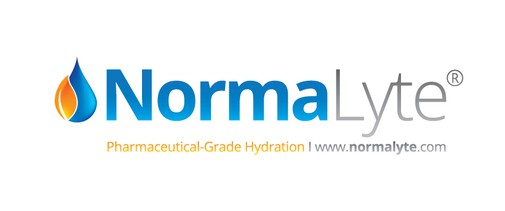There are a number of non-pharmacological treatments and lifestyle adaptations that may help POTS patients reduce and cope with their symptoms. The following are a list of the most commonly recommended measures. It is important to remember that treatment, pharmacological or non-pharmacological, should be individualized as POTS patients may react differently to treatments depending on POTS subtype and individual responses.1 Speak with your doctor before making any changes to your treatment plan.
Increase Fluid and Salt Intake
It is often recommended to increase both fluid and salt intake in order to increase blood volume, which is typically low in POTS patients. This has proven to be particularly helpful in patients with blood pooling, hypovolemia, or hypotension.2 Except for the hyperadrenergic subtype of POTS, a fluid intake of approximately two liters and an intake of three to five grams of salt is typically recommended per day.3 Note that salt includes sodium and chloride. One gram of table salt contains approximately .393 grams (393 milligrams) of sodium. That means that five grams of salt contains approximately 1.965 grams (1965 milligrams) of sodium. This number can be useful when tracking salt in food with nutrition labels, which often list sodium content.
Smaller Meals
After eating a large meal, much of our blood is redirected to aid in the digestion process, which, for POTS patients, can increase symptoms. Therefore, it is recommended to eat several smaller meals throughout the day in lieu of two or three large ones.2
Lower Carbs/Lean Protein
Patient who notice a worsening of symptoms after eating may want to try consuming fewer simple carbohydrates (like refined sugars and flours) and consuming healthy protein with each meal (such as skinned chicken breasts, salmon, skim milk or low fat yogurt).
Examine Your Reaction To Gluten
Patients who have gastrontestinal symptoms may want to speak to their doctor about getting tested for Celiac Disease. Some of the blood tests for Celiac Disease require the person to have been eating gluten for several weeks prior to the test, so don't switch to a gluten free diet until you have spoken with your doctor about a possible Celiac blood test. Even if you don't have Celiac Disease, there appears to be a second group of people who have non-Celiac gluten sensitivity. There is no definitive test for this, so the best way to determine if non-Celiac gluten sensitivity is causing or contributing to your gastointenstinal symptoms is to eat a gluten free diet on a trial basis. Some individuals notice a benefit within a short period of time, while other people take about two or three months to notice a benefit. Of course, some people do not notice a benefit or change in symptoms at all when avoiding gluten.
Examine Your Reaction To Dairy
Similar to gluten, some individuals have a lactose intolerance, while others can have a true allergy to milk protein. Some POTS patients report feeling less symptomatic consuming fewer or no dairy products. Note, if you do have a lactose intolerance, you can still consume some dairy products that contain little or no lactose depending on your sensitivity. There are also supplements available now that contain the lactase enzyme needed to digest lactose containing dairy products (such as Lactaid). If you eliminate dairy from your diet, be sure to include another healthy source of calcium in your diet.
Examine Your Reaction to Caffeine
Caffeine is helpful to some POTS patients and exacerbates symptoms in others. It is therefore useful to figure out if it helps you or if you should avoid it.4
Avoid Alcohol
Alcohol can worsen symptoms for POTS patients. Alcohol is dehydrating and can lead to increased hypotension through dilation of the veins and thus should be avoided by most POTS patients.5 6
Elevate Head During Sleep
It is recommended to slightly elevate the patient's head during sleep. This is done in order to help (re)condition the patient's body to orthostatic stress,6 and this can also help patients that may be experiencing gastric motility problems that result in acid reflux or G.E.R.D. The best way to do this is to raise the head of the bed with a few bricks or large books. A wedge pillow is not very helpful for this. Elevating the whole body and having the feet be lower than the hip area is needed to get the intended benefit. A wedge pillow only elevates the shoulders and head, but does nothing to change the position of the hips or the lower legs.
Try Compression Garments
Compression support hose and abdominal binders can be helpful for some POTS patients by lessening the peripheral venous pooling and hypotension.6 The most effective compression hose are 30 mm Hg of ankle counter pressure and go waist high.3 There are many different varieties such as closed toe and open toe, knee high and waist high. All varieties are available for each gender and may be subsidized through some insurance plans as a durable medical good with a doctor's script. There are new variety of colors and patterns available for the fashion conscious patient. Some brands are more comfortable and breathable than others, so don't give up on compression stockings simply because the first pair you try are not comfortable. Getting a professional fitting at a medical supply store may help, and you may even be allowed to try on a few pairs before purchasing them.
Exercise
Exercise should be considered an essential part of treatment for almost all POTS patients. Reclined aerobic exercise, such as swimming, rowing and recumbent bicycling, as well as strengthening of the abdomen and legs, have been found to be most beneficial.3 See Exercises for Dysautonomia Patients for more information.
Counter-Maneuvers
Counter-maneuvers such as tensing the leg muscles or crossing your legs while standing have been shown to reduce symptoms of postural stress, cerebral perfusion, and oxygenation.7 This rarely stops POTS from acting, but may reduce symptoms and/or slow the effects of standing down. If you are feeling faint or very dizzy, sit or lay down to prevent injury from a fall.
Scheduling
POTS may require you to reduce your activity load, get more sleep, and change your schedule. It is helpful to plan activities for the time of day that is best for you; for many POTS patients, the morning is particularly difficult.5 It is also helpful to keep your schedule flexible as symptoms can flare-up without much notice or forewarning.
Morning Routine
As previously stated mornings can be especially symptomatic times for many POTS patients. There are a few things you can do to help mitigate these symptoms. It is helpful to drink a large glass of water or other hydrating fluid before you get up in the morning.6 It is also recommended to break down the standing up process into stages: supine to seated to standing.1
Avoid Prolonged Standing
It is important to avoid prolonged standing as standing precipitates a worsening of POTS symptoms in most patients. If you must stand for a long time, try flexing and squeezing your feet, leg and gluteus maxiumus muscles, or shifting your weight from one foot to the other. The more you can move your lower half while standing, the better your blood will pump back to your heart.
Showering
Use of a shower chair can be very helpful for some patients, as it eliminates the need to stand, making showering less likely to trigger an exacerbation of POTS symptoms. It is also helpful to use lukewarm water as either hot or cold can trigger POTS symptoms. Some patients also find it better to shower just before bed, since showering can leave some POTS patinets very tired. Another technique is to avoid putting your hands above your head to wash your hair, by bending forwards and flipping your head upside down in the shower, as if you were washing your hair in the sink. This can help ward off orthostatic symptoms while allowing you to wash your hair.
Disability Parking Placard
Depending on the severity of your symptoms, you may be eligible for a disability parking placard, which for some can mean the difference between being able to partake in more daily activities and not by shortening the walk. The requirements and forms vary by state and can be located on your state's DMV website.
Mobility Scooter or Wheelchair
POTS may make some patients bed or wheelchair-bound.8 While it is important to try to exercise as much as your physical condition allows you to, the inability to stand or walk very far does not have to preclude you from all daily activities. In such cases, a wheelchair or mobility scooter can be very helpful for POTS patients to engage in daily life activities even while very sick or while having a flare-up.
Maintaining an Even Temperature
It is important for POTS patients to maintain an even temperature as extremes, particularly heat, can exacerbate symptoms.8 Air conditioning, body cooling vests, sun shirts, handheld misters/personal fans, hats, layers in case of temperature fluctuation, and quick drying clothing and sheets can all be helpful in maintaining an even temperature. Some patients use an old fashioned bag of frozen peas as an ice pack during extreme heat. The peas mold to the body, and can be used and re-frozen over and over again (but don't accidentally eat them after they have been thawed and refrozen!).
Find Your Triggers
POTS symptoms can be exacerbated by a variety of situations and activities. It's helpful to find out what exacerbates your symptoms so you can avoid or mitigate a flare-up and plan ahead.
Have A Go Bag
Since POTS patients may use many tools to help manage their symtoms, it can be challenging getting packed to leave the house. Sometimes just gathering all of your things together can be exhausting in itself, leaving you less energy to enjoy whatever activity you were going to attend. It may be helpful to have a large purse or knapsack containing all of the items you are likely to need when leaving the house. That way, when you decide to go somewhere, you don't waste energy running around the house trying to find your water bottle, your salty snack, your medications and your hand held fan, etc.
Keep A List Of Medications
One important thing that should be in your Go Bag, or better yet, in your wallet, is a list of all of your current medications, dosages and time of day you take them. If you have any food or drug allergies, you can list these as well. Also, it may be a good idea to have an "In Case Of Emegency" contact name and phone number, as well as your doctor's contact information, and a very brief explanation of your important medical diagnoses. Since many EMTs and ER doctors do not know what POTS is, you may want to list it as "POTS/autonomic dysfunction." That way, they won't think you have Pott's Disease, a totally unrelated illness that causes tuberculosis of the spine.9
Sources
1. Thanavaro, Joanne L., and Kristin L. Thanavaro. "Postural Orthostatic Tachycardia Syndrome: Diagnosis and Treatment." Heart & Lung 40.6 (2011): 554-60.
2. Abed, Howraa, Patrick A. Ball, and Le-Xin Wang. "Diagnosis and Management of Postural Orthostatic Tachycardia Syndrome: A Brief Review." Journal of Geriatric Cardiology 9 (2012): 61-67.
3. Grubb, Blair P. "Postural Tachycardia Syndrome." Circulation: Journal of the American Heart Association 117 (2008): 2814-817.
4. Streed, Joel.
http://podcasts.mayoclinic.org/2008/04/23/postural-orthostatic-tachycardia-syndrome-pots/
?>"Postural Orthostatic Tachycardia Syndrome (POTS)." Mayo Clinic Podcasts. Mayo Clinic, 23 Apr. 2008.
5. Grubb, Blair P., and Barry Karas.
http://onlinelibrary.wiley.com/doi/10.1111/j.1540-8159.1999.tb00546.x/abstract?>"Clinical Disorders of the Autonomic Nervous System Associated with Orthostatic Intolerance: An Overview of Classification, Clinical Evaluation, and Management." Pacing and Clinical Electrophysiology 22.5 (1999): 798-810. 30 June 2006.
6. Kanjwal, Yousuf, Dan Kosinski, and Blair P. Grubb.
http://onlinelibrary.wiley.com/doi/10.1046/j.1460-9592.2003.t01-1-00262.x/abstract?>"The Postural Orthostatic Tachycardia Syndrome: Definitions, Diagnosis, and Management." Pacing and Clinical Electrophysiology 26.8 (2003): 1747-757. 24 July 2003.
7. Van Lieshout, Johannes J., Frank Pott, Per Lav Madsen, Jeroen Van Goudoever, and Niels H. Secher. "Muscle Tensing During Standing: Effects on Cerebral Tissue Oxygenation and Cerebral Artery Blood Velocity." Stroke 32 (2001): 1546-551. American Heart Association, 20 Mar. 2001.
8. Grubb, Blair P., Yousuf Kanjwal, and Daniel J. Kosinski. "The Postural Tachycardia Syndrome: A Concise Guide to Diagnosis and Management." Journal of Cardiovascular Electrophysiology 17.1 (2006).
9. Turgut, M. Spinal tuberculosis (Pott's disease): its clinical presentation, surgical management, and outcome. A survey study on 694 patients. Neurosurg Rev. 2001 Mar;24(1):8-13.
| | |




